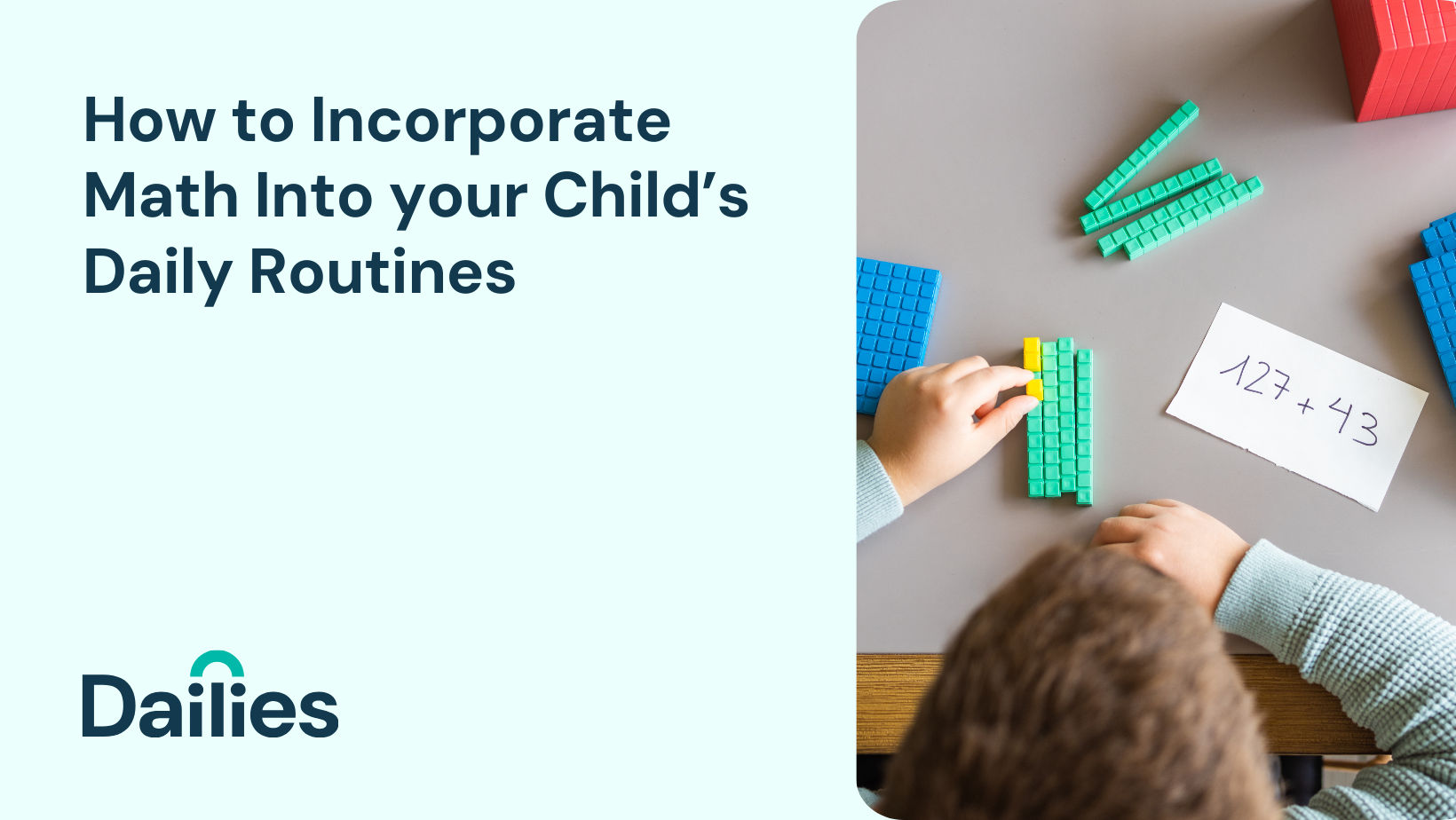Written by
Eleonor Leite-Ah Yo Read all posts by this author
How to Incorporate Math Into Your Child’s Daily Routines
Incorporating mathematics into your child’s daily routines is surprisingly easier than many people imagine. I am a firm believer in place-based learning, or place-based education in that we learn through our community. The local culture and people, the environment, and the history of a place are essential for learners; these things enhance one’s learning by providing deeper meaning, connection, and relevance. In other words, we learn simply by living. And learning math is no exception.
You don’t need to be a teacher by profession to embrace this idea. In fact, it may be best that you are not a math teacher by profession. Sometimes, we (as I am a veteran math teacher) get lost in the specialized language that can be mathematics. In actuality, math is so beautifully and naturally occurring in our world that it can be addressed seamlessly in normal daily routines. Our job as parent/caregiver/teacher is to help facilitate learning for young, developing, and curious minds. Now this in and of itself is actually not that intuitive and must be practiced once we are aware of ourselves. Facilitating learning is a skill based around inquiry. We are keepers of so much knowledge by the sheer fact that we are older and more experienced than our children. However, I would challenge you to withhold telling them what you know and instead, to ask them questions that would lead them to the very same conclusions. But this is a topic for an entirely different blog post! Let’s back up a second because we first need to recognize the math that exists in our daily lives. It is literally EVERYWHERE but the easiest way to show you is to walk you through a day in the life of my very own toddler, Ray Ray.
Morning Routine
And we may as well start from the moment he wakes up – Ray often rises before the sun. We always take a peek at his hippo clock. Now, Ray is almost 3 so we only use a digital clock to check the time. I read the time out loud because he doesn’t know how to say the time yet. I’ll ask if he recognizes any of the numbers on the digital clock but I don’t make a big deal about it if he doesn’t and I may ask him to repeat the time after I say it but I don’t force that either. I trust that he’ll get it in time (no pun intended). I’ve heard him attempt to tell me the time and though drastically wrong, I celebrate the attempt. At not-even-three years old, this is enough!
(For elementary school children, I would invest in an analog clock if you don’t already have one! Telling time is part of first grade math standards and in my humble opinion, a lost art.)
My toddler is addicted to music and wants to turn on very specific types of songs most mornings. My husband and I no longer have control of our Spotify playlists as they are now overtaken by “Garbage Truck songs for kids” and “Construction Truck songs for toddlers”. But news flash! If you haven’t heard, music and math are strongly correlated. I have a piano background; was classically trained. At some point I’ll talk to Ray about measures, counting beats, and how those are depicted as musical notes however these discussions would go over his head right now. We can still count beats and find the rhythm which is really just a pattern that repeats itself. Since Ray hasn’t learned what it means to be embarrassed or bashful, he’ll just rock the dance moves and I have no shame (in the comfort of my own house) to make up some easy toddler dance routine to go with the songs. Recognizing patterns is a huuuuge math topic that eventually leads to higher level math topics called sequences and series.
Breakfast is an easy incorporation of math. Ray helps Dad measure the coffee grounds for his coffee every morning. He pours the water into the coffee maker learning to fill to the line. And when we decide to bake breakfast muffins or pancakes, he will measure out the ingredients all while I talk us through the names of the measurements. While much of the meaning is not understood yet, Ray is soaking it all in, building a foundation for understanding ratios. I hear him talking about measurements when he turns to dramatic play with his stuffed animals and trucks. I promise it will be music to your ears!
Once we get the morning started, Ray and I make an effort to get outdoors provided the weather is decent. Fortunate to live in Hawaiʻi, albeit one of the rainiest towns, we typically get outdoors for at least an hour. Swimming is our favorite, okay my favorite because it exhausts my ball of energy the quickest. In addition to the obvious math of counting fish that we see under water, Ray and I talk about the other creatures we observe, above, below and at sea level – crabs, ducks, butterflies, sea turtles and eel. Though I don’t try to turn this innocent discussion into one about positive and negative numbers, I am setting Ray up for a future math lesson on integers, the concept of 0, number lines, and absolute value. By simply emphasizing that some creatures live under water and some live above with a few that live at sea level or go between both, I am helping him build understanding of math concepts that will be addressed around middle school. .
Afternoon & Evening Routine
I’m jumping straight to our afternoon/evening routine since lunch is pretty similar to breakfast when it comes to incorporating math. And, well naptime, won’t yield too many teaching moments.
After a refreshing nap, Ray is usually starving for a snack and then I try to get Ray outdoors to burn off energy before we tackle a wind-down bedtime routine. We stop at the locally grown store for a snack and we talk about how much things cost and how much we have to spend on snacks. Ray gets to pay at the register and we try to use cash instead of card so he is exposed to money. Though he is too young to add or subtract, he is starting to gain a sense about larger and smaller numbers as he helps me decide whether we have enough money to buy certain items at the store.
If you have older children, then grocery or food runs are the perfect opportunity to have them practice addition and subtraction hard skills but also to problem solve mathematically. Bring a notebook and pencil so they can calculate, or help them estimate and round to nearest dollars or cents. Honestly, there’s even benefit to letting them use a calculator since they still need to determine the operation to use.
Bathtime is a prime opportunity to insert some math concepts. Ray has floaty bath toys, one of which is a boat. He tries to put animal figurines on his boat but as you can imagine, the boat is often tipped by the heavier animal figurine. When I ask him why, he is able to articulate that one of the animals is bigger than the other, once again providing an opportunity to compare values and understand the concept of balance which is often the analogy we can use to understand equations and how to solve them.
The list of math connections in one’s daily routine is endless. Sometimes it takes a bit of creativity but there is often no need to orchestrate math to happen naturally. Start to become hyper-aware of the activities that you and your child engage in. Anything with numbers can guarantee a little math lesson. But math concepts run deep so don’t discount the little things and keep asking those curious brains questions. Asking children to think critically is essential to developing their mathematical thinking!

